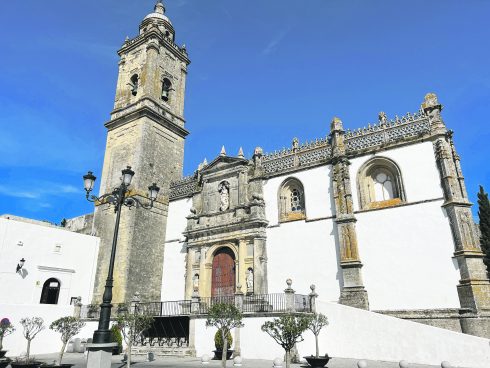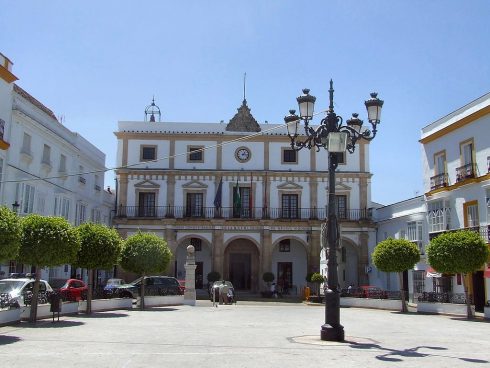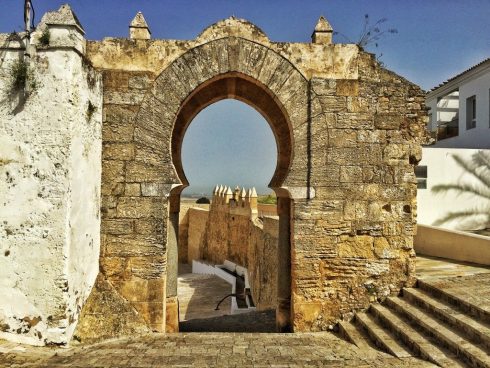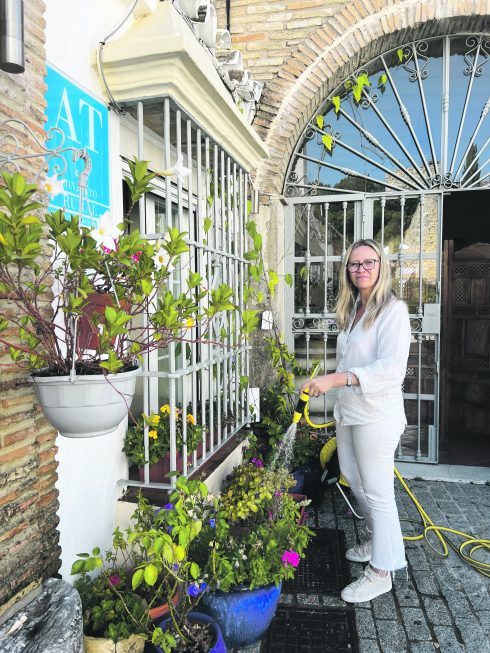STANDING sentinel like a Roman centurion, it rears up out of the Cadiz outback high on a hill.
This is Medina Sidonia, the prettiest town in Andalucia you have probably never heard of.
Authenticity at its best, the classic white town is little visited being off-the-beaten track and overshadowed by its nearby neighbours of Vejer and Jerez.
And Moors the pity, as it’s not just its Arabic history that’s worthy of note: Medina Sidonia is awash with history going back way beyond the Romans into Phoenician times.
As well as a hilltop fortress, a beautiful church and views to die for, the town is full of historic buildings with old wooden doorways and classic metal rejas (or window bars).

The fortified town was once one of Spain’s most important ducal seats after it was dragged off the Moors in 1264.
The title Duque de Medina Sidonia was handed to the family of Guzman el Bueno, the knight who bravely battled to seize it, as well as in Tarifa, where you will find his statue.
There is a very distinct aristocratic air about Medina, whose cobbled streets are ordered and clean and there is a real sense of grandeur about its buildings.
Take the charming Plaza de Espana, it is one of the most loveliest plazas in Spain with fine 17th and 18th century townhouses lining it.
The Renaissance fronted facade of the town hall is well worthy of note, while there are some good spots to stop for refreshment.

From here, head up to Plaza Iglesia Mayor and one of Andalucia’s true religious gems, Santa Maria la Coronada, a fine example of 15th century Gothic architecture built on top of a mosque.
Back downhill, don’t miss the lovely Moorish archway, the Arco de la Pastora, which was built in the tenth century, although its marble pillars are possibly Phoenician.
Secret discovery
The best discovery, though, is through a nondescript doorway off a side street leading down a narrow flight of stairs.
Only emerging in 1997, when a local man decided to build an underground garage, is this perfectly intact section of Roman road still featuring its guttering, sewers, pavement and giant stone flagstones.
It is in peak condition and a true journey back in time, showing clearly what an incredible race the Romans were. Look out for the remains of a children’s game etched into one of the giant paving slabs.
Nearby, an interesting museum takes visitors around part of the advanced sewerage network that the ancient civilisation installed in the town.
It is particularly poignant that over 2000 years ago the Romans understood the importance of sewage and municipal planning, when today a large percentage of Andalucia’s towns still dump raw sewage into rivers.

The extraordinary system of two-metre high barrel-vaulted tunnels, found in 1963, are solid and extensive and are said to run throughout the entire town. Children will love running up and down the tunnels, and the adjacent museum features a series of games and exhibits for them too.
Local English businesswoman Kirsty Biston, who moved to the town in 2003 to open a hotel and restaurant, La Vista de Medina, believes Medina Sidonia is one of the least exploited towns for tourism in Spain.
“Tourism in Medina is very different from the coast. It really is a place to slow down, relax and turn your back on the stresses of daily life. It is far from the bright lights and the sophistication of other well known places like Vejer,” adds the mother-of-three, whose restaurant has one of the best views in Spain.

“I have always imagined Medina and Vejer to be like sisters, sharing the same history but very different people. Medina is the quieter, humbler, more reserved sister and you have to take the time to get to know her but when you do you’ll be amazed at how special and charming she is.”
Visit Kirsty’s collection of seven studios and apartments with two pools at www.lavistademedina.com
With so much history it is fitting that the town has a series of sweets that have been produced here since Arabic times.
“The best known of these is the alfajor,” says Jose Manuel Gomez, of local company Distinctivos de Calidad, that supplies the area’s specialities to over 50 restaurants around Andalucia.
“It is a type of macaroon made with almonds, eggs and honey and it is known around Spain,” he adds.
“But there is so much of quality around here, much of it due to the incredible nearby grazing land.”
To help market the local products he and a number of other producers have recently launched a new brand ‘Aromas de Medina’.
“It is slowly getting the name around and so people understand the idea of quality,” he explains at his shop, which also sells foie gras, high quality ham and cheese from around the province.
READ MORE:

